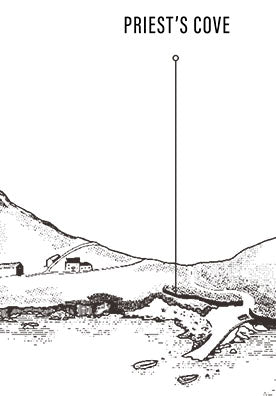Near St Just, Bollowal Farm is a traditional Cornish family farm established in 1925. Bollowal Farm is situated 150 feet above sea level between Cape Cornwall and Land’s End. The farm is part of an HLS environmental scheme providing habitat for the successful breeding of the Cornish Chough. Cornwall is known for its brilliant, local farmer’s markets and some of the freshest produce comes straight from Bollowal Farm. Cornwall has a vibrant culinary scene and you’ll often find chefs sourcing high quality ingredients from local farmers. Be it freshly baked bread, homemade preserves, local cheeses or free-range meat and poultry, Cornwall’s farms and top-notch seasonal produce attract communities far and wide, many from the surrounding parishes.
Over 70% of Cornwall’s land is farmed in some way, with much of the county’s countryside dominated by grass pastures for beef and dairy cattle. Almost every type of farming practiced across the UK can be found in Cornwall and its prize-winning cattle (and in particular, the
pedigree Red Devons’s Bollowal herd) are known worldwide. Red Devon cattle are descendants of ancient cattle breeds from the Southwest of England. With their long and curly winter coats, they have the thickest hides of all cattle breeds making them resilient to Cornwall’s colder months.
Around the corner from Bollowal Farm is
Ballowall Barrow, a prehistoric chambered tomb managed by the National Trust. Ballowall Barrow - also known as Carn Gluze Barrow - is one of the one of the largest (and most complicated) prehistoric funerary monuments that cluster along the West Penwith coastline. It is believed that the barrow was constructed by local communities to provide a tomb for the dead with a spectacular sea-cliff view.


Before 1878, Ballowall Barrow was concealed by waste from the nearby tin mines. It was long-forgotten after being used extensively throughout the Neolithic and Middle Bronze Age but discovered by a famous Cornish antiquarian named William Copeland Borlase. The story goes that Borlase was drawn to the sacred site by miners returning from work at night who had reported seeing strange lights burning on the cliff top. These mysterious lights were interpreted as dancing fairies or sprites.
Miners were superstitious and Cornish folklore is filled with mysterious tales of distressed ghosts, phantom hooves, ringing bells and
haunted locations. Cornish mine sprites, known as Knockers, were said to live below the ground. While some believe these mischievous sprites would knock on the walls of tin mines to warn the miners of a site about to collapse, other says they would do the same thing to trap the miners… creepy stuff!
According to
English Heritage, Borlase’s excavations revealed a unique and complex Bronze Age tomb. And in the centre of the barrow was a mound surrounded by two walls. Contained within it were five small stone-lined chambers, known as cists, some with Bronze Age pottery and cremated bone.
After the excavation, Borlase built stone walls to display important features of the barrow but this radically altered the appearance of the site which makes Ballowall Barrow hard to understand today. While the reconstruction carried out was meant to make the interior features more accessible, the monument today has little do with its original appearance (which would have been much more dramatic). Ballowall Barrow is partly original and unexcavated, partly a reconstruction of what Borlase found during his excavation. That said, it is a rare and important site - no other multi-phased monument of this type has been identified in Cornwall… yet!









